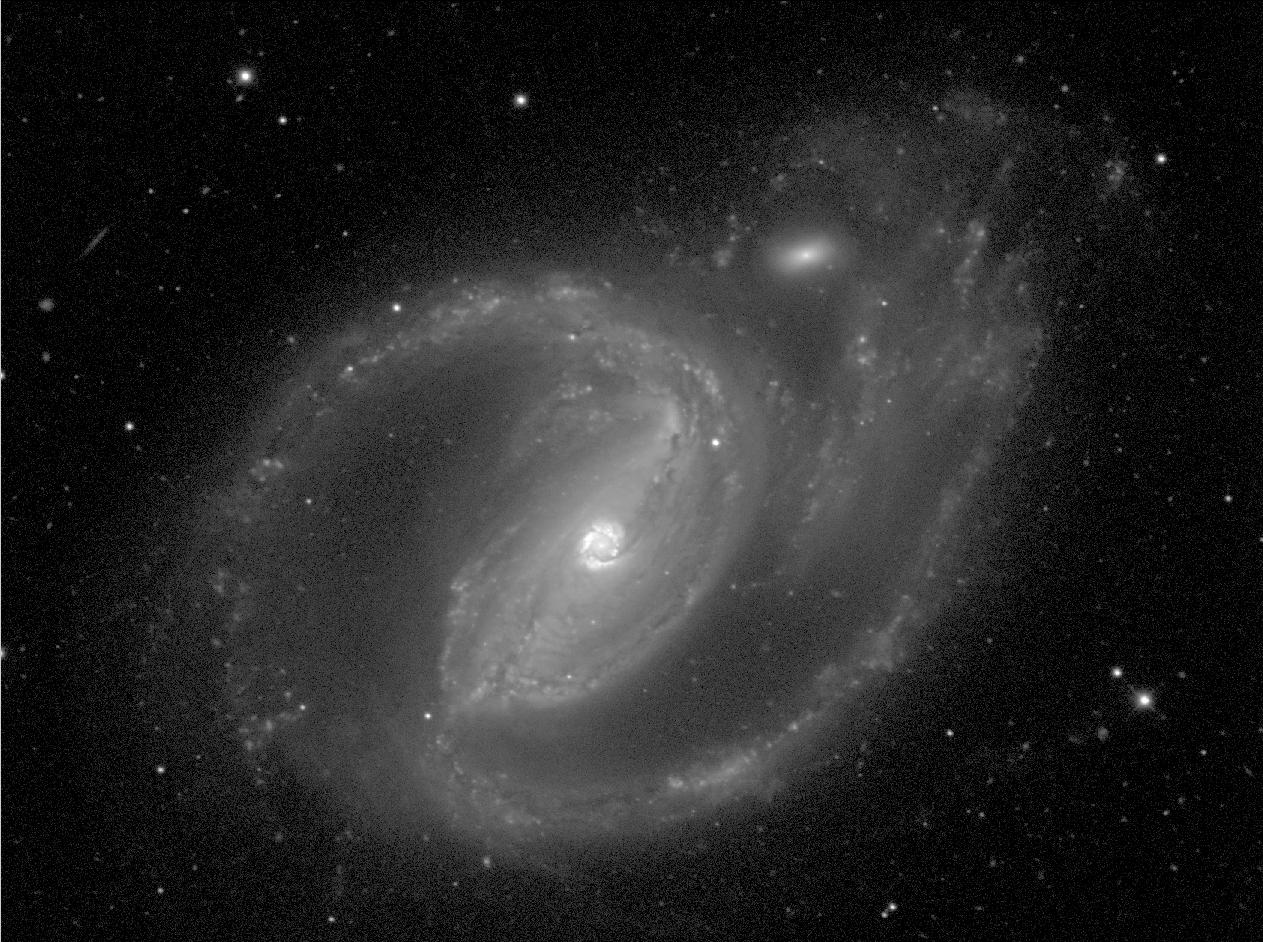

De Vaucouleurs Atlas Type: (R1')SB(rs)b pec
Filter: B
Telescope: UH 2.2-m
North up , East left
Field Dimensions: 12.2 x 9.1 arcminutes
RC3 Type: SB(s)b
RSA Type: RSBbc(s)I-II
Surface Brightness Range Displayed: 17.0-27.0 mag per square arcsec
Absolute Blue Magnitude: -20.9
Elmegreen Spiral Arm Class: AC12
De Vaucouleurs Atlas Description:
NGC 1097 is a severely interacting barred spiral with obvious tidal debris and distortions. It has an obvious bar with strong leading dust lanes imbedded in a bright oval. The rim of the oval appears slightly enhanced where an inner ring would be found, but the contrast is low because the bar fills the ring zone much more than is typical. The color index map, however, shows that the rim has slightly enhanced blue colors, which would be characteristic of an inner ring . Since the feature is weak and fairly open, we use the (rs) classification rather than (r).
The outer arms of NGC 1097 are well-defined, but the southwest arm appears distorted due to an interaction with a small companion galaxy, NGC 1097 A. These arms form a broken R1' OLR subclass pseudoring. The interaction may also be responsible for the broken nature of the inner pseudoring .
NGC 1097 is best known for its exceptional starburst nuclear ring, one of the largest known examples. It is clearly visible in the B-band image, but the B-I color index map best reveals the structure in the area. The ring is lined by numerous blue knots and is intersected on both sides by the strong leading dust lanes in the bar. Dust is seen both inside and outside the nuclear ring, and is in general very complex. Especially interesting is the series of lanes oriented perpendicular to the bar on its south side.